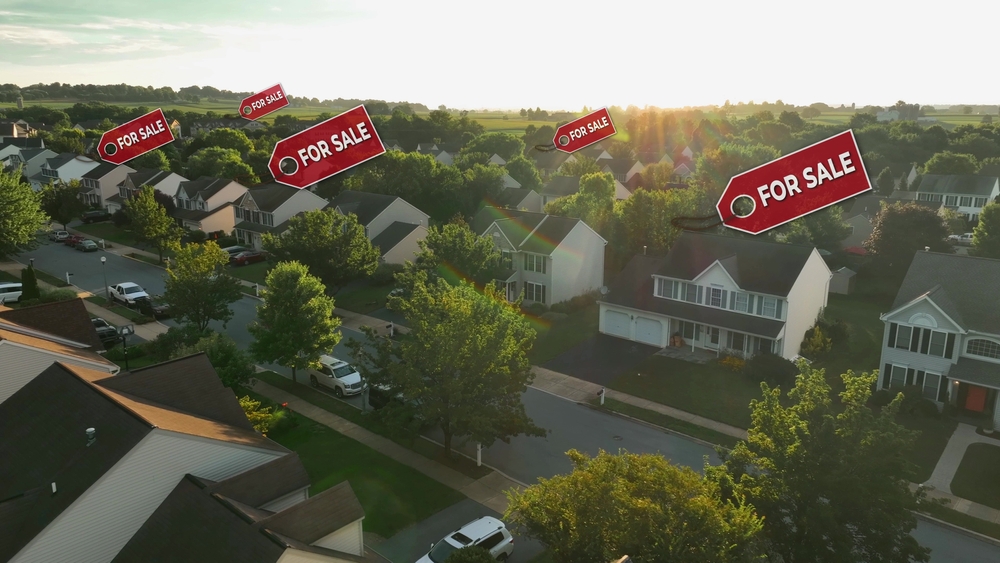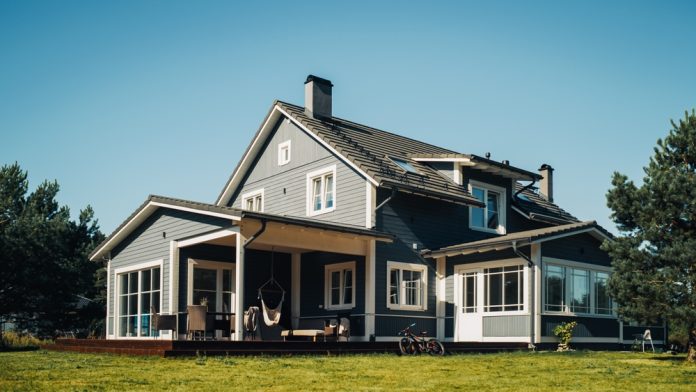If it feels like home prices have been on a one-way rocket ship ride for years—you’re not imagining things. Since 2012, U.S. home values have largely climbed with few interruptions, fueled by low mortgage rates, tight inventory, and pandemic-driven moves. But 2025 is shaping up to be different.
According to Zillow’s latest forecast, home prices are expected to dip nearly 2% by the end of 2025 (Zillow Research). It’s the first notable nationwide cooling in over a decade.
Now, 2% might not sound like much, but in real estate—where every percentage point can mean tens of thousands of dollars—it’s worth paying attention to.
Let’s break down what’s fueling this shift, and more importantly, what it could mean if you’re thinking about buying or selling a home this year.
Why Is Zillow Forecasting a Drop?
Several key factors are converging to put downward pressure on home prices:
1. Inventory Is Growing
After years of extreme scarcity, the housing market is finally seeing some breathing room.
- Active listings are up 28.5% year-over-year as of March 2025 (Realtor.com Data).
- New construction is also helping: builders who paused projects during 2022-2023 due to costs are now releasing finished inventory into the market.
More homes on the market naturally shifts power slightly away from sellers and toward buyers. It’s basic supply and demand—when there’s more of something, prices flatten or fall. 
2. Mortgage Rates Remain Elevated
Borrowing isn’t getting any cheaper.
- As of April 2025, the average 30-year fixed mortgage rate sits around 6.83%.
While that’s a slight improvement from the peak rates of 7%+ in 2023, it’s still double what buyers were used to during the 2020-2021 boom.
Higher rates mean buyers qualify for smaller loans—shrinking demand for expensive homes and putting downward pressure on prices.
3. Economic Uncertainty Is Growing
Broader economic worries are adding fuel to the cooldown:
- New tariffs implemented in 2025 are raising costs across industries.
- Inflation remains sticky.
- Political uncertainty during an election year has historically slowed major purchasing decisions.
People tend to sit tight when they’re uncertain about the economy—and fewer buyers means less competition.
4. Buyer Behavior Has Shifted
Another subtle but important change: the psychology of buyers.
- “FOMO” (fear of missing out) that drove wild bidding wars during the pandemic is gone.
- In its place? “FOOP”—fear of overpaying.
Adding to that, the median age of first-time buyers hit a record 38 in 2024. Delayed life milestones and affordability concerns mean today’s buyers are choosier—and slower to pull the trigger.
Is a 2% Drop a Big Deal?
At first glance, 2% might not seem headline-worthy. But in real terms, it can make a meaningful difference, and let’s be real, every dollar saved means more budget to spend elsewhere.
- On a $400,000 home, a 2% decline means an $8,000 price difference.
- On a $750,000 home, it’s a $15,000 swing.
Context matters too:
- During the 2008 crash, home prices nationally dropped about 30%.
- Between 2020 and 2022, many markets saw year-over-year gains of 20-30%.
So no—this isn’t a crash. It’s a market correction, bringing prices back into better balance after an unsustainable sprint.
Also worth noting: not all markets will move uniformly.
- Zillow expects some Midwest and Northeast cities to hold firm or even see slight increases, while many pandemic boomtowns (think Austin, Phoenix) may see larger corrections.
What This Means for Buyers
If you’re house hunting in 2025, here’s how Zillow’s forecast could impact you:
1. More Choices, Less Pressure
For the first time in years, buyers aren’t forced to jump on the first house they see.
- With inventory growing, you can afford to be pickier.
- Fewer bidding wars mean you can actually negotiate.
2. Prices Could Get a Little Softer
While you shouldn’t expect massive discounts, certain sellers—especially those who must move—will be motivated to negotiate.
Pro tip: Focus on days-on-market metrics in your area. Homes that have been sitting 45+ days are often ripe for price reductions.
3. Mortgage Rates Still Matter More Than Price
Even a slight dip in home prices could be offset by higher mortgage rates.
Example:
- A 1% higher mortgage rate increases your monthly payment more than a 2% lower home price does.
- Focus on your monthly payment, not just the sticker price.
Bottom line for buyers: If you find the right house and can afford the payment, don’t overthink the 2%—your future self won’t care whether you paid $402,000 or $408,000 if you stay long-term.
What This Means for Sellers
If you’re considering selling, Zillow’s forecast signals a shift in strategy:
1. Pricing Is Critical
Gone are the days of pricing 10% above market and letting buyers fight it out.
- Price competitively from the start to attract early interest.
- Overpricing in a softening market leads to painful price cuts later.
2. Presentation Still Matters
Buyers today are cautious.
- Homes that are clean, staged, and move-in ready stand out. Think about sprucing up the curb appeal.
- Minor upgrades like fresh paint or landscaping can yield major returns.
Think of it this way: You’re competing for attention now, not just accepting the highest offer. A little extra effort can separate your home from others.
3. Expect Longer Sale Times
In some areas, average days on market are creeping back toward 45-60 days, especially for higher-end properties.
Patience is going to be your best friend here. So be patient—and prepare for more negotiation around inspections, concessions, and closing dates.
4. Opportunity If You’re Buying Too
If you’re selling to buy another home, remember:
- You’ll benefit from the same market softness when purchasing your next property.
- In many cases, the move-up opportunity is better in a cooling market than a hot one.
OK… Final Thoughts…
Let’s be real here, a 2% price dip isn’t earth-shattering. But it’s meaningful, it’s something.
It signals a market returning to something healthier—where buyers and sellers actually negotiate, and where price growth is sustainable instead of spiraling out of control. So in my book this is nice step in the direction we want.
If you’re a buyer, the next 12 months could offer more choices and less stress.
If you’re a seller, smart pricing and strong presentation will be your best tools.
Above all: Stay flexible.
Real estate is hyper-local—and while Zillow’s national forecast gives us a big-picture view, your neighborhood might tell a different story.
Oh, my closing thought for you… Knowledge is power—especially in a shifting market.


